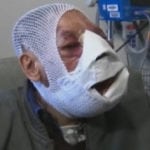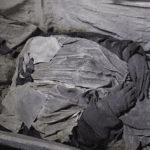 Miscellaneous
Miscellaneous  Miscellaneous
Miscellaneous  Our World
Our World 10 Green Practices That Actually Make a Difference
 Humans
Humans Ten Historic Men Who Deserve Way More Credit Than They Got
 Movies and TV
Movies and TV The 10 Most Heartwarming Moments in Pixar Films
 Travel
Travel Top 10 Religious Architectural Marvels
 Creepy
Creepy 10 Haunted Places in Alabama
 History
History Top 10 Tragic Facts about England’s 9 Days Queen
 Food
Food 10 Weird Foods Inspired by Your Favorite Movies
 Religion
Religion 10 Mind-Blowing Claims and Messages Hidden in the Bible Code
 Facts
Facts 10 Things You Never Knew about the History of Gambling
 Miscellaneous
Miscellaneous Ten Groundbreaking Tattoos with Fascinating Backstories
 Our World
Our World 10 Green Practices That Actually Make a Difference
 Humans
Humans Ten Historic Men Who Deserve Way More Credit Than They Got
Who's Behind Listverse?

Jamie Frater
Head Editor
Jamie founded Listverse due to an insatiable desire to share fascinating, obscure, and bizarre facts. He has been a guest speaker on numerous national radio and television stations and is a five time published author.
More About Us Movies and TV
Movies and TV The 10 Most Heartwarming Moments in Pixar Films
 Travel
Travel Top 10 Religious Architectural Marvels
 Creepy
Creepy 10 Haunted Places in Alabama
 History
History Top 10 Tragic Facts about England’s 9 Days Queen
 Food
Food 10 Weird Foods Inspired by Your Favorite Movies
 Religion
Religion 10 Mind-Blowing Claims and Messages Hidden in the Bible Code
 Facts
Facts 10 Things You Never Knew about the History of Gambling
10 Incredibly Strange Surgical Stories
We’ve come a long way since the dark days of trepanning and bloodletting, but for all our state-of-the-art equipment, surgery is still really weird. The practice of cutting open another human and rearranging their body parts is inherently bizarre. And as you might expect, the history of surgery is jam-packed with heroes, villains, and more than a fair share of oddballs.
10The Beauty Queen’s Skull
Jamie Hilton had a wonderful life. She was married with kids and was considered one of the most beautiful women in the US. She’d once been crowned Mrs. Idaho and even competed in Mrs. America. But things took a sharp turn in June 2012. While on a fishing trip with her husband, Hilton took a 4-meter (12 ft) fall and smashed her head against on a rock.
By the time she reached the hospital, Hilton’s brain was swelling at an alarming rate. Doctors needed to relieve the pressure, so they removed 25 percent of her skull. They didn’t want to waste so much perfectly good bone matter, and after her brain returned to its normal size, they planned on putting the skull back in. But what would they do with it in the meantime?
The solution was simple. They sewed it into her abdomen.
By putting the skull under her skin, doctors hoped the body would keep the tissue alive and healthy. In the meantime, Jamie wore a helmet to keep her head safe from further trauma. Forty-two days later, the doctors opened up her abdomen, sliced open her head, and bolted the skull back inside.
She seems to be doing pretty well. According to her most recent blog post, she counts her scar as a “blessing” and as proof that she’s a survivor.
9Karl Langer’s Ice Pick

Karl Langer was a 19th-century anatomy professor from Vienna who liked stabbing cadavers with ice picks. But he wasn’t a pervert (as far as we know, anyway). He was doing some valuable research that just involved poking holes in a bunch of dead bodies.
As an anatomy professor, Langer did a lot of work with fresh stiffs. During his experiments, he noticed that whenever he cut a corpse, the incision looked a little weird. Instead of being a circle, the wound was more of an oval even though his ice pick had a rounded point.
The issue had to do with collagen fibers, the structure that makes our skin elastic. Thanks to collagen, certain parts of the body are stretchier than others. Other parts are really tight. So when Langer stabbed these particular spots, the tension pulled the skin in opposite directions, yanking the wound wide open. This was bad news for patients recovering from surgery. If doctors cut these super-stressed areas, the wounds had to heal while the skin tore itself apart.
Determined to find the best spots for a surgeon to slice, Langer rounded up a lot of bodies. Armed with his trusty ice pick, he turned the cadavers into Swiss cheese. After his experiments were through, he developed an anatomical roadmap, showing where doctors should and shouldn’t cut. These epidermal landmarks are known as “Langer’s lines,” and they’re still proving useful today.
While modern surgeons refrain from using Langer’s lines for certain spots, like the forehead, the diagrams are valuable when it comes to cosmetic operations like breast surgeries. And even though many doctors prefer cutting along natural wrinkle lines, Langer’s research spared generations of patients from agonizingly long recoveries.
8Orlan’s Surgical Art
We’ve read about some crazy performance artists in the past, but when it comes to pure, gut-wrenching ickiness, there’s no one nuttier than Orlan. Born Mireille Suzanne Francette Port, Orlan has dabbled in all sorts of art forms, from photography to sculpting, but this Frenchwoman’s main claim to fame was “The Reincarnation of Saint Orlan,” a rather disturbing project involving music, poetry, and cosmetic surgery.
Between 1990 and 1995, Orlan went under the knife nine times. With cameras rolling, she’d enter the OR wearing elaborate costumes. Music would play as surgeons wearing robes danced around the room. Orlan would recite poetry or works by French philosophers as mimes performed by her bedside. And then the scalpels came out.
Orlan turned herself into a collage of great paintings, something like Western art’s greatest hits. During one procedure, surgeons gave her Mona Lisa’s forehead. Another time, her jaw was shaped to resemble the chin of Botticelli’s Venus. And then there were the horns. For some bizarre reason, Orlan had a lump of silicone implanted above each eyebrow. All these procedures were streamed live in art galleries, and Orlan was totally conscious throughout.
According to Orlan, her “carnal art” is a commentary on our perception of beauty, a rebellion against Christianity, and an attempt to become the “ultimate work of art.” There was also money. Orlan sold postcards and photos of her operations and even little preserved bits of flesh. However, if you’re famous, you might not have to pay for a piece of Orlan. The artist once gifted Madonna a chunk of her thigh.
7India’s Kidney Kingpin
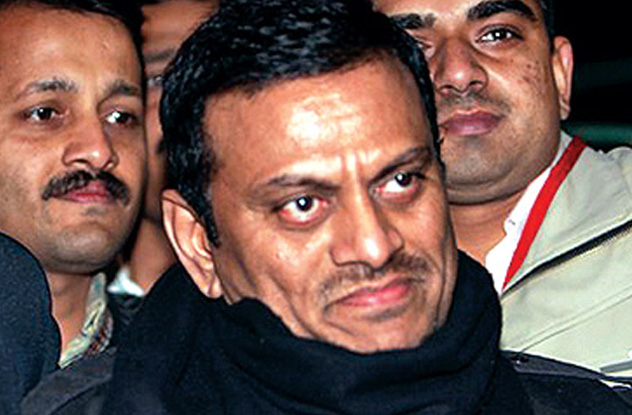
Amit Kumar was the king of kidney transplants. People in desperate need of help flocked to his hospital in the Indian township of Gurgaon, where he stole the organs from impoverished workers. Known in the media as “Dr. Horror,” Kumar used tricks, intimidation, and bribery to swipe as many kidneys as possible.
Kumar started his scam in the ‘80s, before India outlawed organ trading in 1994. Back then, Kumar hired cab drivers to look for foreigners in need of a kidney. While cabbies searched for customers, Kumar sent a second group into the slums, hunting for beggars and handcart pullers. These middlemen offered $300–$1,000 per kidney. That isn’t much for an organ that keeps your body free of deadly toxins, but when you’re hungry, $300 seems a lot.
By preying on the poor, Kumar performed hundreds of operations over 20 years. He was occasionally arrested, but whenever he left jail, he just moved to another city and got back to work. He often teamed up with professional surgeons and bribed government officials. But the really scary thing is Kumar wasn’t even a doctor.
Far from being a professional surgeon, Kumar was an ayurvedic practitioner. That’s a form of alternative medicine native to India. In other words, the man wasn’t qualified to remove hemorrhoids, much less a kidney. Three Turkish clients even died under his care. But Kumar was a fantastic crook and had a real doctor whip up some false death certificates claiming that the men died of cardiac arrest.
Kumar’s organization finally collapsed when a man sold him out in 2008. The man claimed to be a victim of Kumar’s scheme, though he was likely an employee who’d been shafted and wanted revenge. Whatever the reason, Kumar was sentenced to 10 years for letting his Turkish patients die and earned seven years for conspiracy, forgery, and intimidation.
6The Man Who Cashed A Check

David Arndt was a surgical star. Successful, handsome, and incredibly smart, this Harvard-educated orthopedic surgeon was at the top of his game near the turn of the millennium. Then things took a very weird turn in 2002 when Arndt was supposed to operate on spinal patient Charles Algeri.
Arndt showed up looking awful. He hadn’t shaved, and there were dark circles under his eyes. He was also acting strange during the surgery. He kept asking the circulating nurse to phone his secretary and ask if “Bob” had shown up yet. “Bob” was Arndt’s code word for his paycheck.
Eventually, his secretary had the check delivered to the OR, and Arndt seemed to lose his mind. Seven hours into the operation, with Mr. Algeri unconscious and his back wide open, Arndt told his team he was going to step outside for a minute. But instead of taking a quick break, he left the hospital and headed to the bank to cash his check. He was gone for 35 minutes.
Arndt claimed that he needed to cash his check so he could pay some bills. This didn’t sit well with the medical board, and they suspended his license.
Some suspect that Arndt is a major narcissist who put his own needs in front of his patient’s. Another possible explanation is he was a methamphetamine addict. In fact, he made extra money for buying drugs by selling meth himself, which eventually led to his arrest in 2003. This wasn’t his first run-in with the law. Shortly before, he’d been picked up for drugging and having sex with a 15-year-old boy.
Arndt was sentenced to 10 years for his crimes. As for Charles Algeri, Arndt had screwed up so badly that he needed two more operations, and as of 2010, he couldn’t feel anything below his right knee. The man filed a lawsuit and received $1.25 million.
5The Surgery That Made A Monster
In 2013, RadioLab interviewed a man called Kevin, an epileptic who’d undergone surgery to end his seizures. Doctors removed part of his brain, and at first, it seemed like a success. But after Kevin turned 35, the seizures returned.
For a while, Kevin tried to deal with the fits, but they grew so bad that he finally scheduled a second operation. This time, doctors were worried the surgery would impact Kevin’s appreciation for music. Since Kevin was a music lover, he didn’t want to put that part of his brain at risk. So he opted to stay awake and sing. The surgeons poked and prodded at his brain, and when Kevin stopped singing, they knew to stay away from that section.
After the procedure, the convulsions stopped. But Kevin’s personality started to shift. He started playing the piano nonstop, constantly eating, and wanting sex all the time. Things got even worse when Kevin got on to his computer.
Suddenly, Kevin was addicted to pornography, everything from bondage to animal sex—and then child porn. “I didn’t want to do it,” he told RadioLab, but he kept downloading the worst videos and images imaginable. Eventually, in 2006, the authorities showed up on his doorstep and led him off to jail.
Kevin pleaded guilty, but during the sentencing, things got tricky. Neurologist Orrin Devinsky claimed that Kevin wasn’t to blame. He was suffering from Kluver-Blucy syndrome. The doctors had damaged Kevin’s anterior temporal lobes, the part of the brain that keeps our darkest desires in check.
The prosecution argued that Kevin was in control because he kept himself in check when at work. There wasn’t a single pornographic image on his office computer. Devinsky countered that when people are active and mentally occupied, they have more control over neurological problems like Kluver-Blucy, but when they’re bored or irritated, they lose their inhibitions.
When it came time for sentencing, the judge agreed that Kevin was suffering from a disorder. However, in those moments when he was in control of his faculties, he should’ve asked for help. The judge sentenced Kevin to 26 months behind bars and 25 months of house arrest.
Today, Kevin is no longer in prison. He takes medication to keep his urges under control and seems to show sincere remorse. But just how culpable was Kevin? Was he responsible for his acts, or was it really case of “my brain made me do it”?
4William T.G. Morton Saves The Day
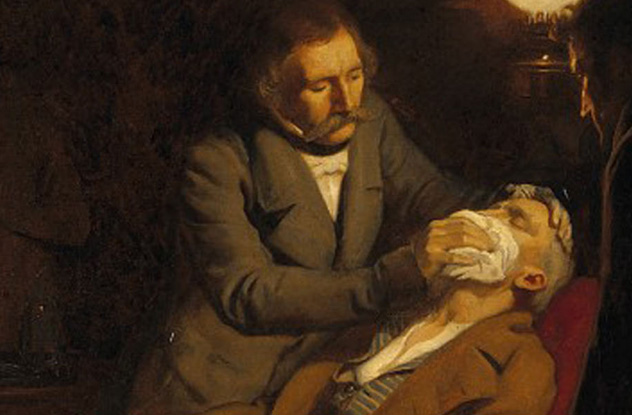
Back in the early 1800s, operating rooms were torture chambers. These were the days before anesthetics, and patients were held down by strong men or leather straps as the blades came out. Many people who survived surgery remembered hearing the saws crunching through bone and their limbs plopping onto the floor.
To drive the point home, here’s an account from Fanny Burney, who received a mastectomy in 1811. “When the dreadful steel was plunged into the breast,” she wrote, “cutting through veins—arteries—flesh—nerves . . . I began a scream that lasted unintermittingly during the whole time of the incision—& I almost marvel that it rings not in my Ears still!”
But everything changed in 1846 thanks to dentist William T.G. Morton. He believed the gas diethyl ether might stop the world’s suffering. He tested the stuff on everything from his dog, his patient, caterpillars, and chickens to his pet goldfish. He even used the gas on himself.
Convinced ether would change the world, Morton made an appointment with the greatest surgeon of the day, John Warren of Massachusetts General Hospital. Warren was doubtful but agreed to let Morton try his miracle cure on October 16. The setting was the Ether Dome, an amphitheater atop the hospital building. The patient was Edward Abbott, who had a tumor in his neck. The room was packed with dubious doctors and skeptical students.
As Morton readied his homemade inhaler (which he hadn’t tested yet), Dr. Warren sarcastically quipped, “Well, sir, your patient is ready.” Morton placed the inhaler in Abbott’s mouth. About four minutes later, the man was unconscious. Morton turned to Warren and replied, “Your patient, sir.”
The surgery was a success. Warren quickly removed the tumor, and Abbott never screamed or struggled. When Abbott finally awoke, he reported only a light scraping sensation. There was no pain at all.
News of Morton’s success spread, and soon doctors across the globe were using ether on their patients. Surgeries were suddenly a whole lot quieter.
3TheNoseDoctor
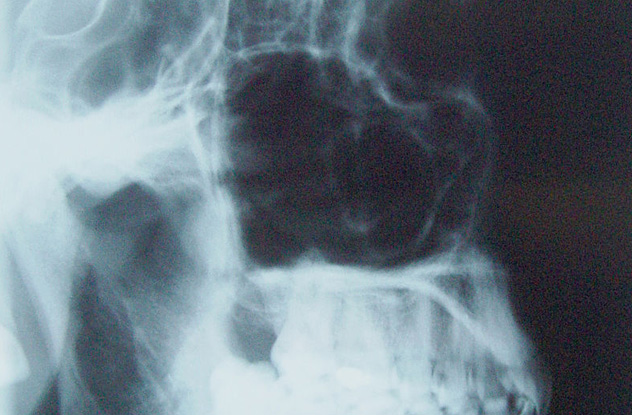
Mark Weinberger called himself “TheNoseDoctor,” and the man got a lot of business. He worked in the town of Merrillville, Indiana, a place full of steel mills. Thanks to the air pollution, people poured into his office, complaining of sinus trouble. Fortunately, Weinberger knew what to do: surgery. Surgery for everyone.
TheNoseDoctor told 90 percent of his patients that they needed sinus surgery during their first appointment. If you walked in with the sniffles, you walked out with holes drilled into the back of your maxillary sinuses. Most of his patients actually didn’t need surgery at all. Making things worse, Weinberger’s methods were outdated, and thank to those holes, many of his patients developed nasty infections.
This was more than negligence. Weinberger was something of a psychopath. He showed his patients terrifying pictures of disgusting, bloody polyps growing in their sinuses—pictures that were entirely fake. There weren’t any other surgeons in his office, and he owned his own CAT scan machine. That meant he didn’t have to send his patients elsewhere for scans. Weinberger was in complete control.
Before things came crashing down, Weinberger earned $30 million. He owned a 25-meter (80 ft) yacht, property in the Bahamas, and a five-story home in Chicago. The man was living large, and his patients were paying the ultimate price. While working on a nine-year-old (who didn’t need surgery because her sinuses were still developing), he missed a tumor growing on her pituitary gland. Even worse, he ignored a woman’s throat cancer, and she soon died.
Eventually, people started filing malpractice suits against TheNoseDoctor, but he wasn’t planning on sticking around. After stealing millions from his own business and loading up on camping supplies, he abandoned his wife in Greece without so much as a goodbye (although he did leave her with $6 million in debt). The surgeon spent five years hiding out in northwestern Italy, but when his new girlfriend discovered his identity, she turned him over to the authorities.
Incompetent to the end, Weinberger tried cutting his throat but screwed up. Instead of claiming his life, he ended up with seven years behind bars. His 282 victims split a $55 million settlement in 2013.
2Ex Vivo Surgeries
Heather McNamara was a seven-year-old girl from Long Island, New York, and she had cancer. This wasn’t your average tumor. This thing was a monster. It had tangled itself in her blood vessels and swallowed up her intestines, stomach, spleen, pancreas, colon, and liver. There was no way doctors could just cut it out.
That’s where Dr. Tomoaki Kato came in. A Japanese surgeon who’d moved to America, Kato specializes in one of the most radical types of surgery imaginable. It’s called “ex vivo” resection, which means “out of the living body.” Instead of leaning over a comatose patient and prodding around her insides, Kato removes all the organs and operates outside the body. It’s an extreme procedure for extreme cases like Heather’s.
By the time Kato was done removing Heather’s guts, the only thing left was the left side of her colon, which had escaped the tumor. Everything else was soaking in a special icy solution. Removing all those organs required cutting out and tying off an incredible number of blood vessels. After the snipping was done, three groups of surgeons scraped away at the entrails, and they had to work fast. If Heather’s organs were outside her body for more than six hours, her circulatory system would shut down.
From the first cut to the last stitch, the whole procedure took 23 hours. That included replacing all the corrupted vessels, using a piece of Heather’s jugular to hook up the liver, and attaching the esophagus to Heather’s intestines as her stomach was too damaged. Of course, Dr. Kato had to take a few quick breaks along the way.
The good doctor has been involved in dozens of “ex vivo” surgeries, most of them successful. There are, however, always cases where there’s just too much damage. In 2010, Kato tried to save a 59-year-old man named Robert Collison who was suffering from a 5-kilogram (10 lb) tumor. Though the surgery was a success, the man died eight weeks later. Fortunately, that wasn’t the case for Heather McNamara. She survived the operation, and as you can see from the above video, she’s doing just fine.
1The Surgeon Who Gave Old Men Monkey Balls

Serge Abrahamovitch Voronoff was quite the crazy character. A Russian surgeon who trained with a Nobel Prize–winning doctor, he studied the effects of castration on eunuchs while working for the king of Egypt until 1910. Obsessed with testicles, Voronoff believed the glands played a key part in the aging process. When he returned to Paris, he began offering “monkey gland operations” to aging gentlemen who wanted to regain their mental prowess and sexual potency.
The first step of a monkey gland operation involves getting your hands on monkey balls. Voronoff often used baboons and chimpanzees (which are technically apes), and the process was quite intense. The primates were anesthetized and placed inside a special box that kept the animals restrained while the doctors snipped away. You don’t want an angry male chimp to wake up while you’re trying to steal the family jewels.
Next, Voronoff sliced the testes into thin layers and grafted them onto the private parts of the gentleman lying on the operating table. As bizarre as it sounds, the operations were wildly popular, and by the time he retired in the 1930s, thousands of men had signed up for the procedure.
The Russian earned quite a bit of cash. He moved into one of the swankiest hotels in Paris and even set up a facility specifically for breeding future “donors.” But as time went on, scientists realized that Voronoff was a major quack. Monkey gland operations were useless and didn’t actually do anything. In fact, some theorize the surgeries helped transmit AIDS from monkeys to humans though others dispute that claim. Either way, it’s safe to say that Voronoff’s operations were totally nuts.
